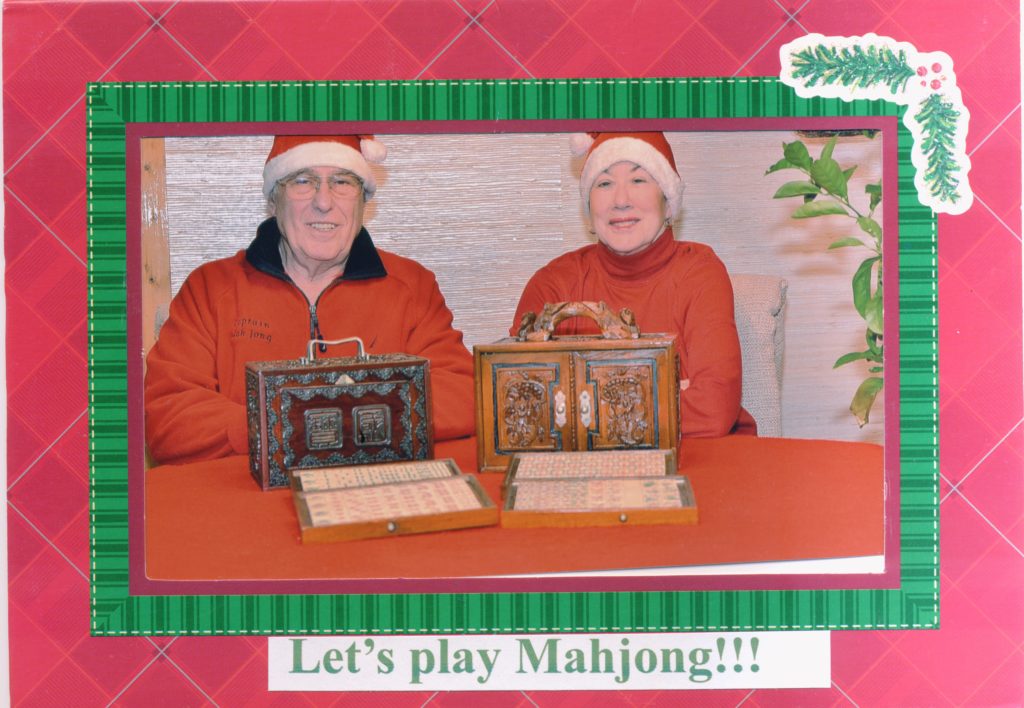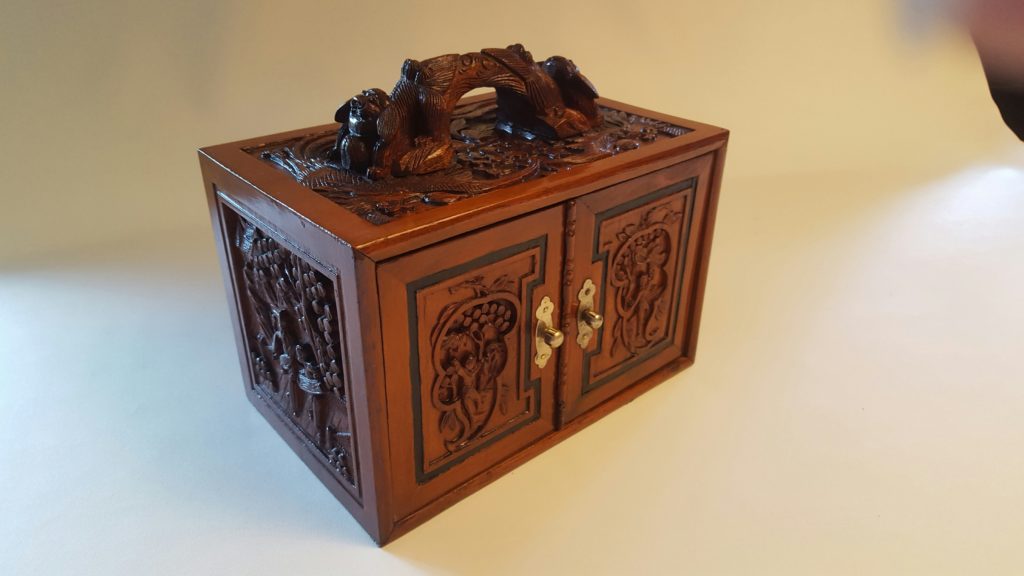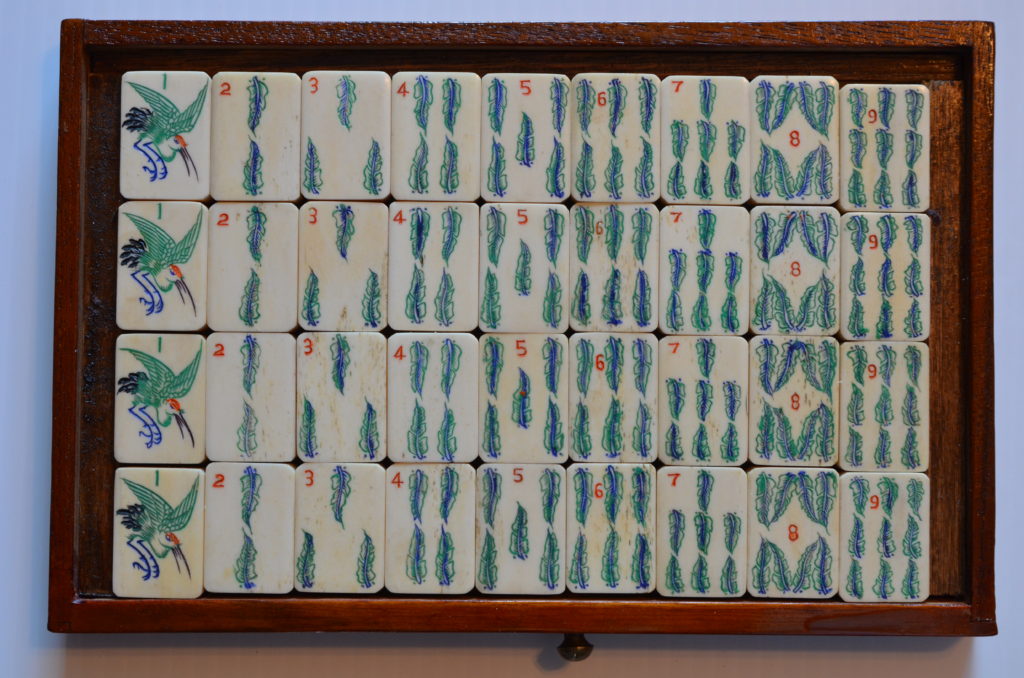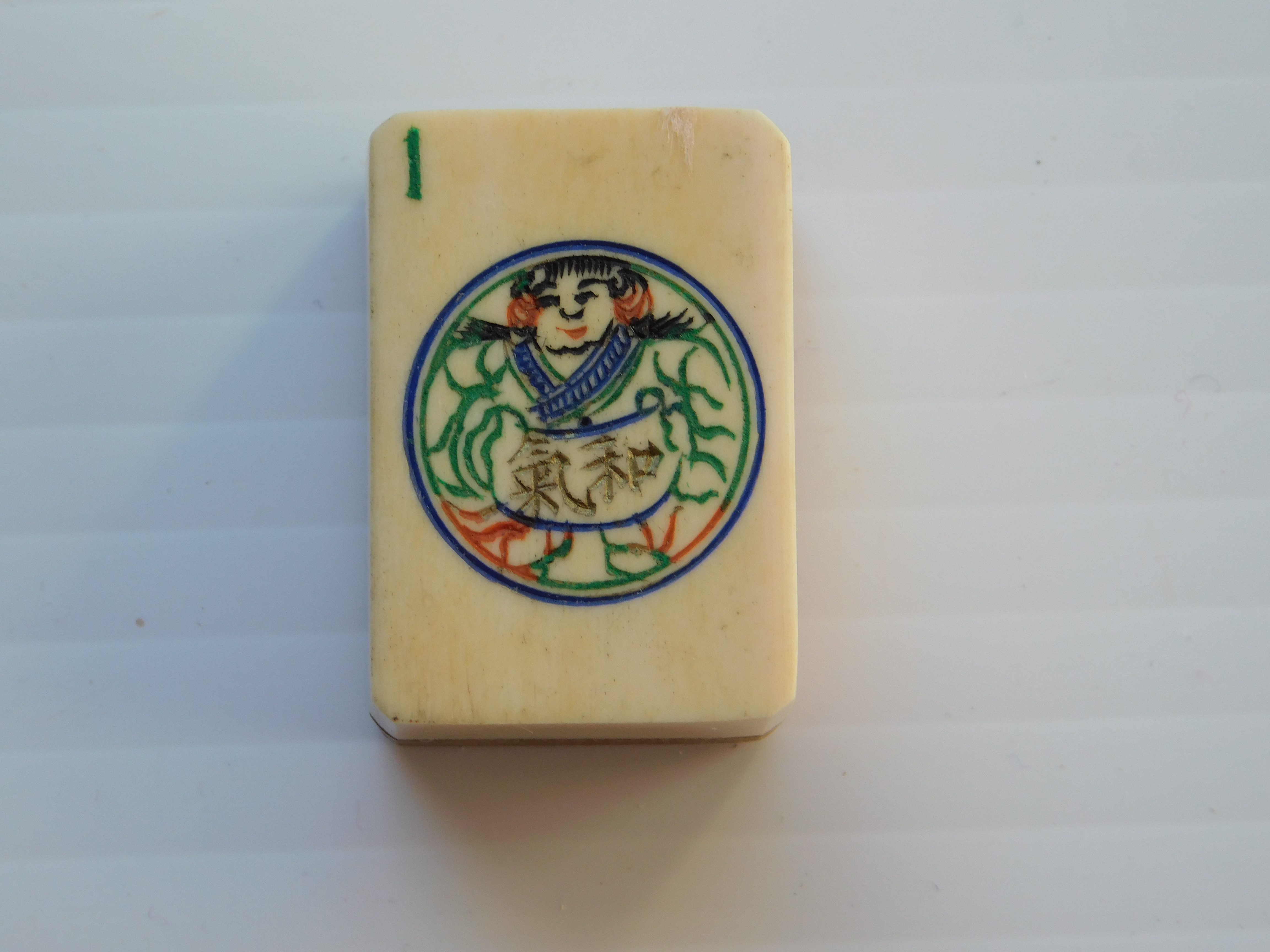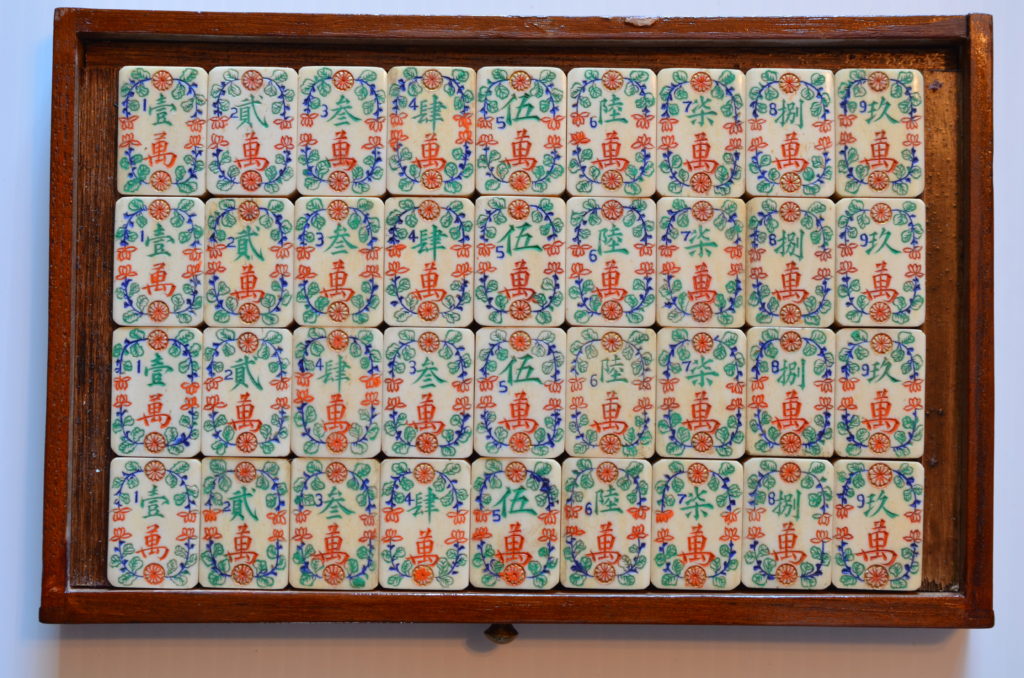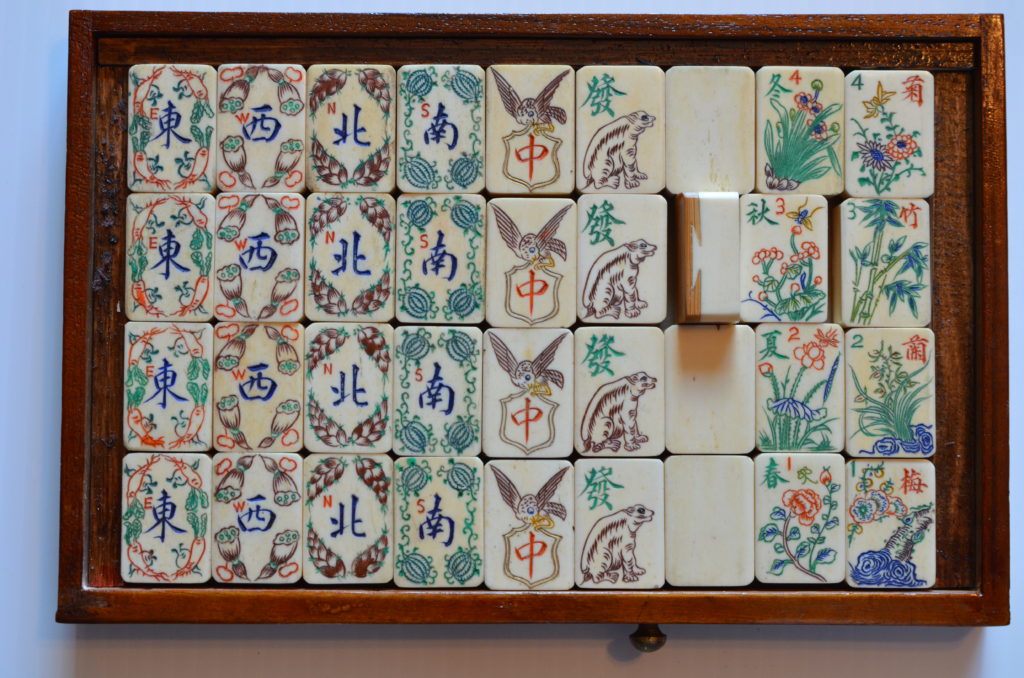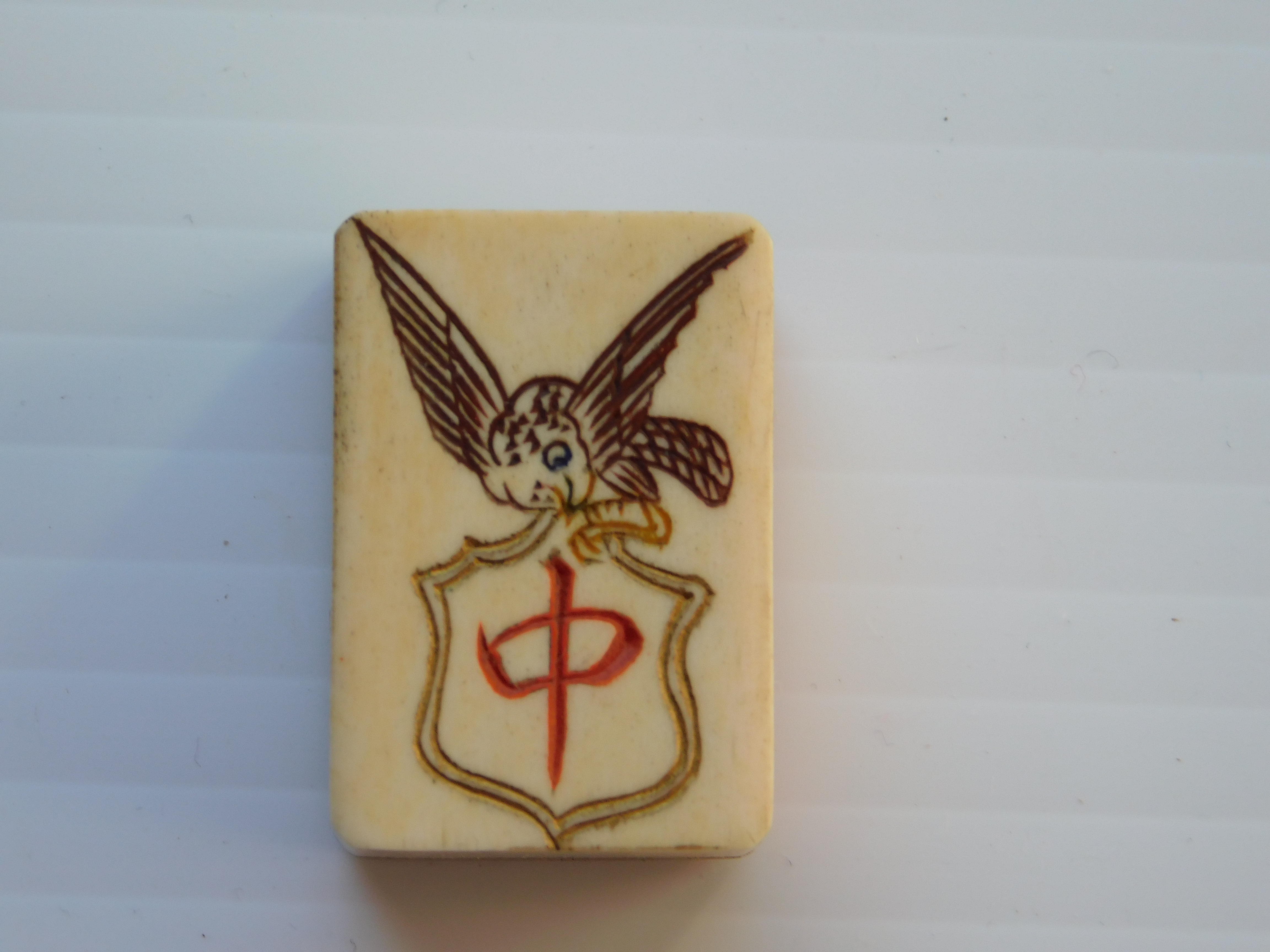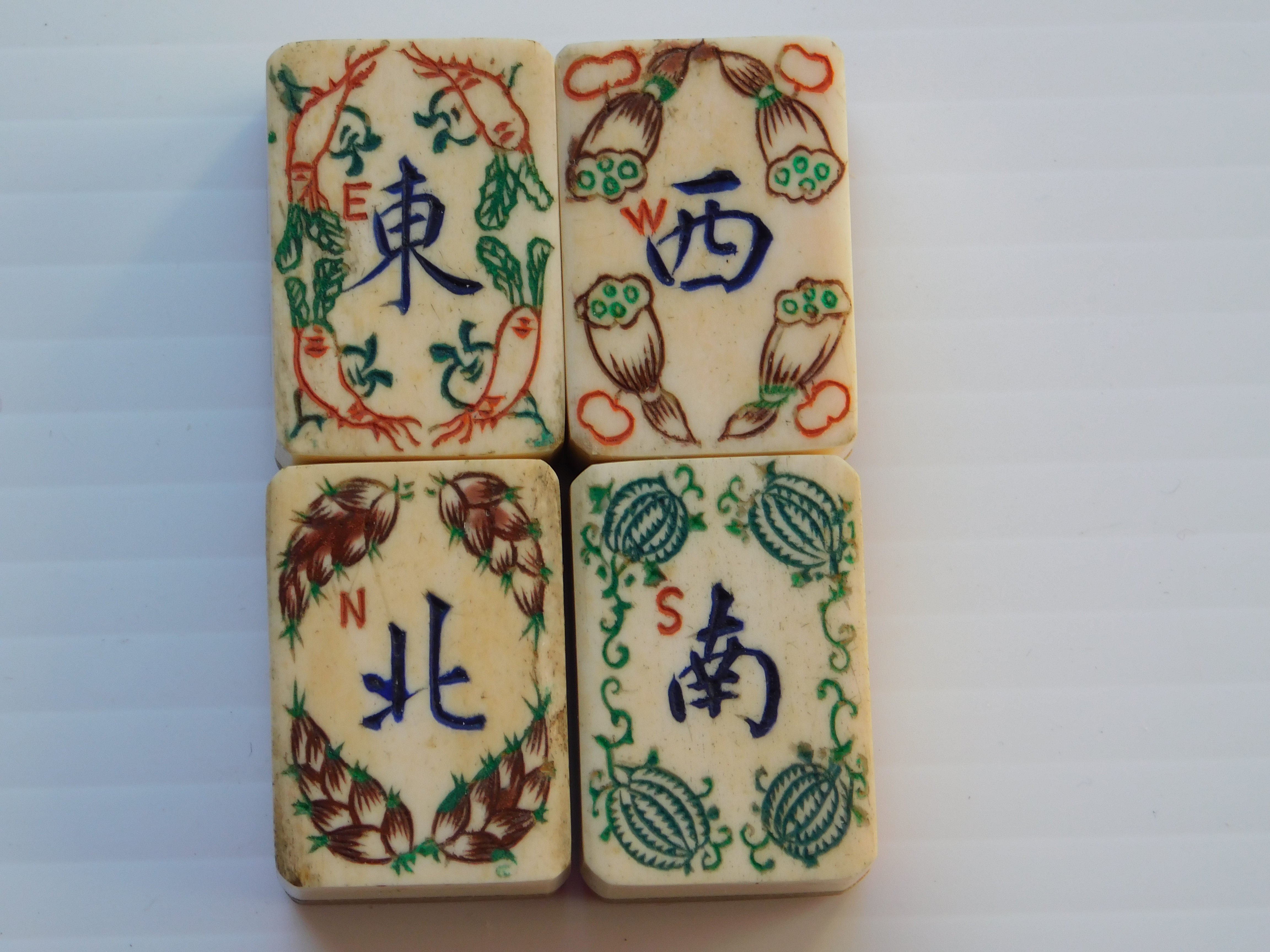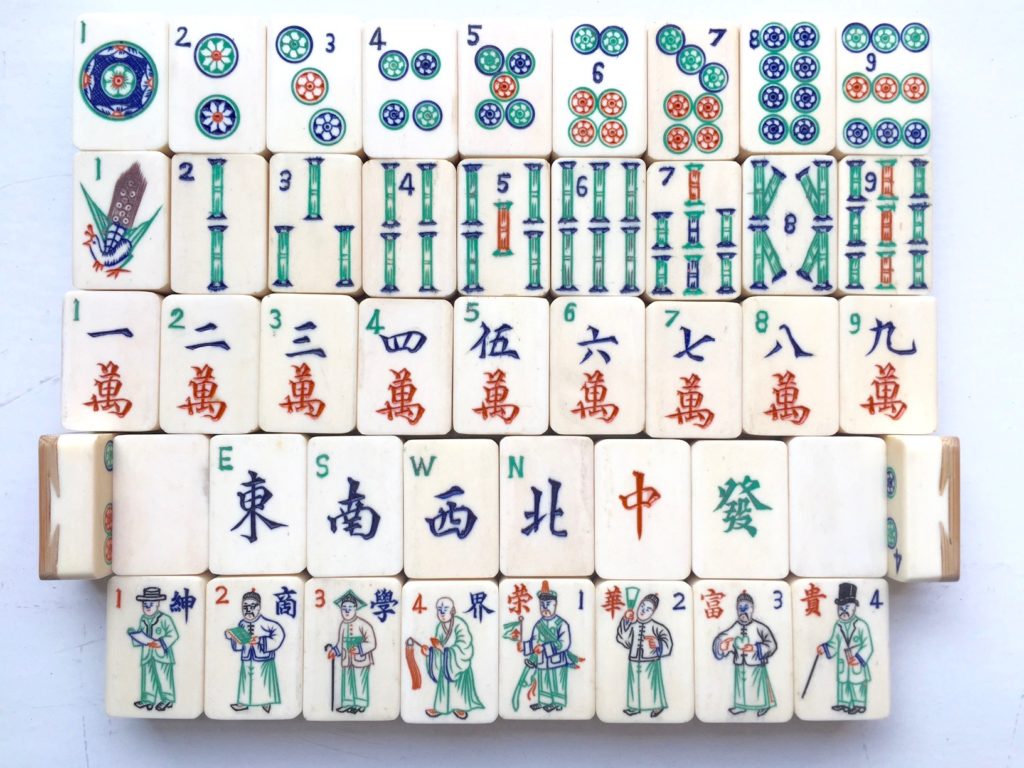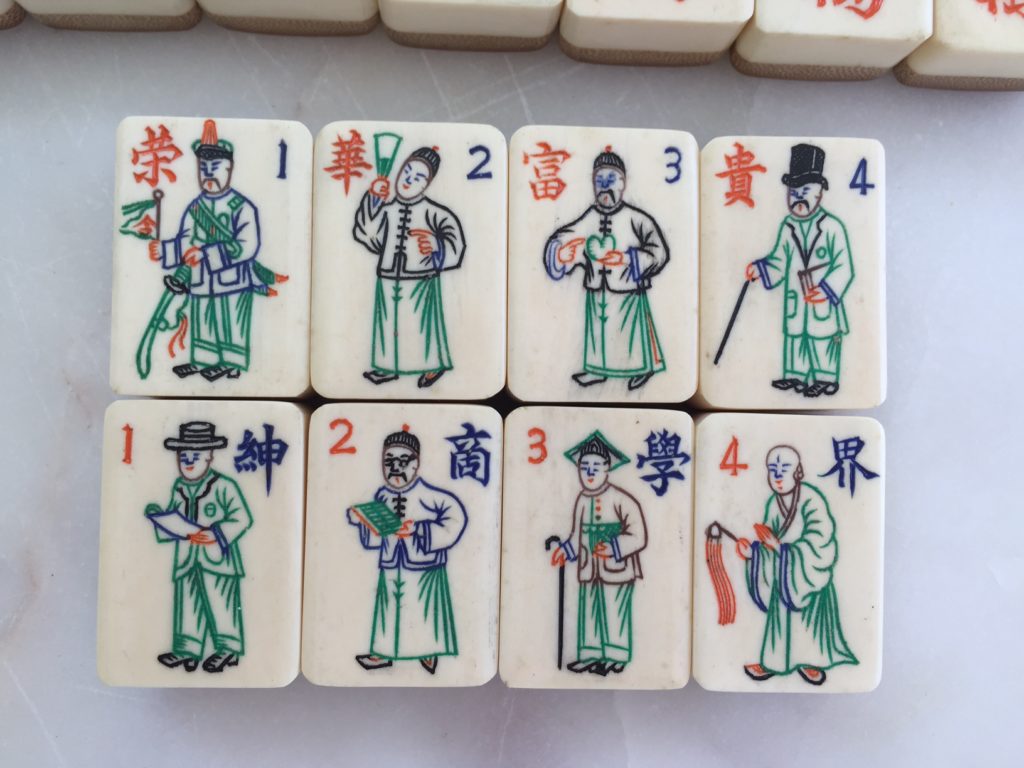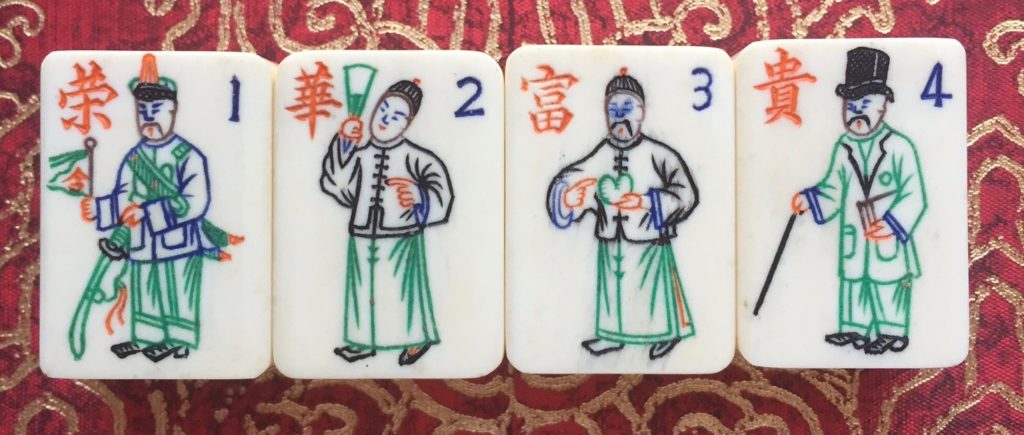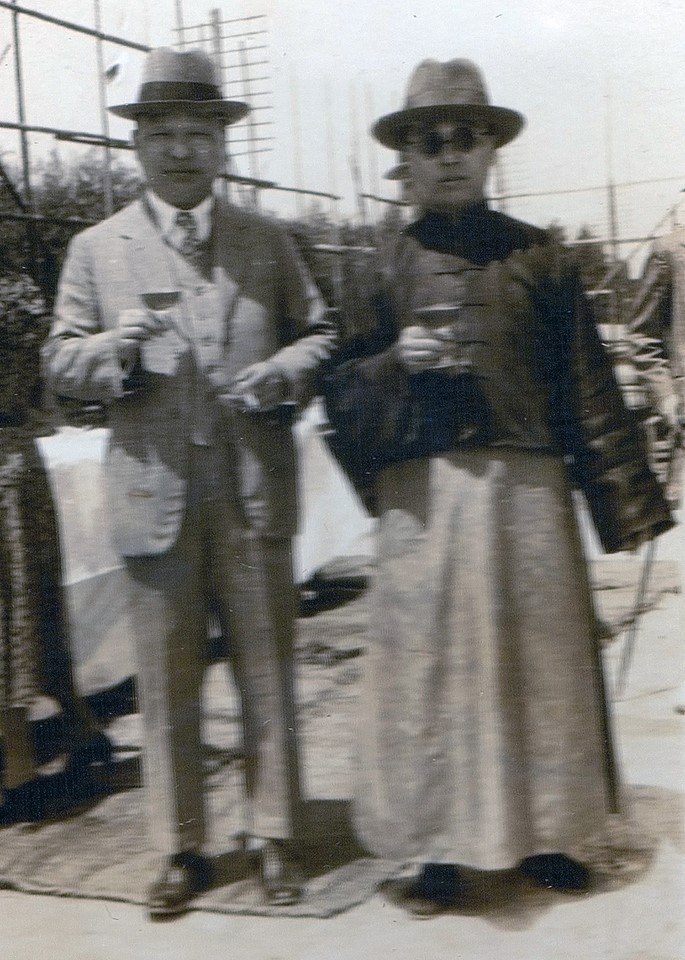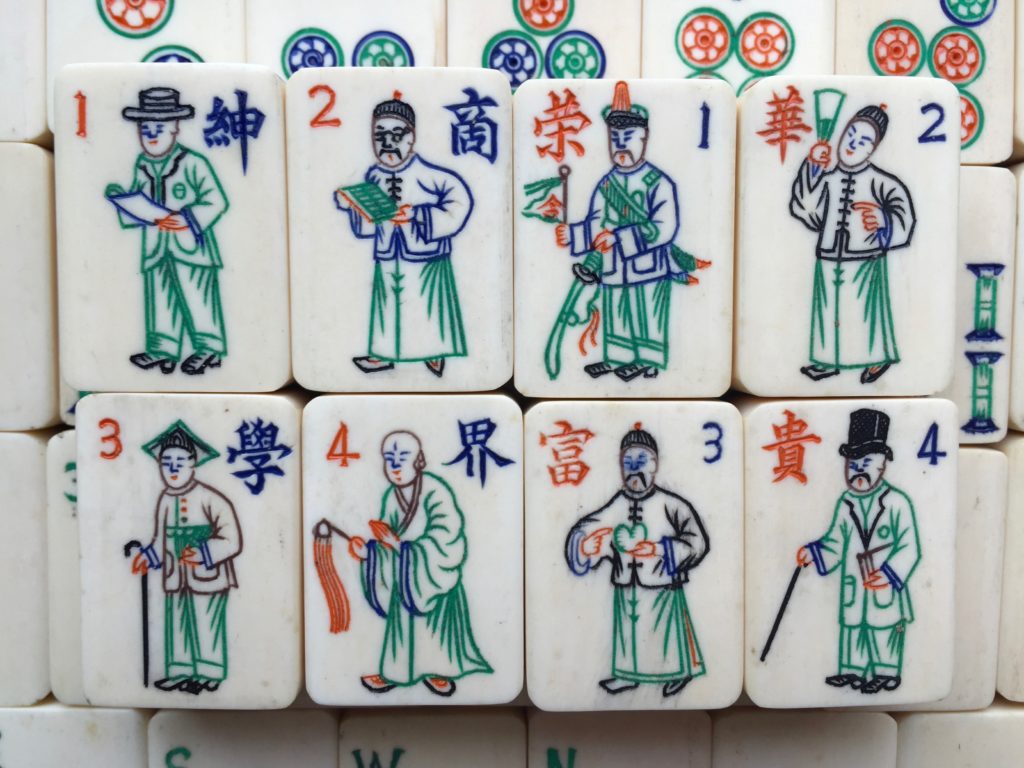I have the good fortune to know Allan and Lila Weitz, two wonderful Mahjong collectors from Canada. They send out a card every year. This is the card I got this year. Of course it is always fun to see the two of them, and the lovely boxes and set really caught my eye. Needless to say, although hard to see clearly in the photograph, I knew the set was a beauty. Allan kindly sent me photographs, and the story of the acquisition is at then end of the post.
The box is one of the most deeply carved boxes I have ever seen, with a Foo dog handle and two doors. Already the piece is a stand-out.
This is a very unusual One Bam crane. The other Bams are Bodhi leaves, from the Bodhi tree, important to Buddha. On rare occasions these leaves appear on Bam tiles in Mahjong.
https://en.wikipedia.org/wiki/Bodhi_Tree
Here is the One Dot-how delightful is this?!
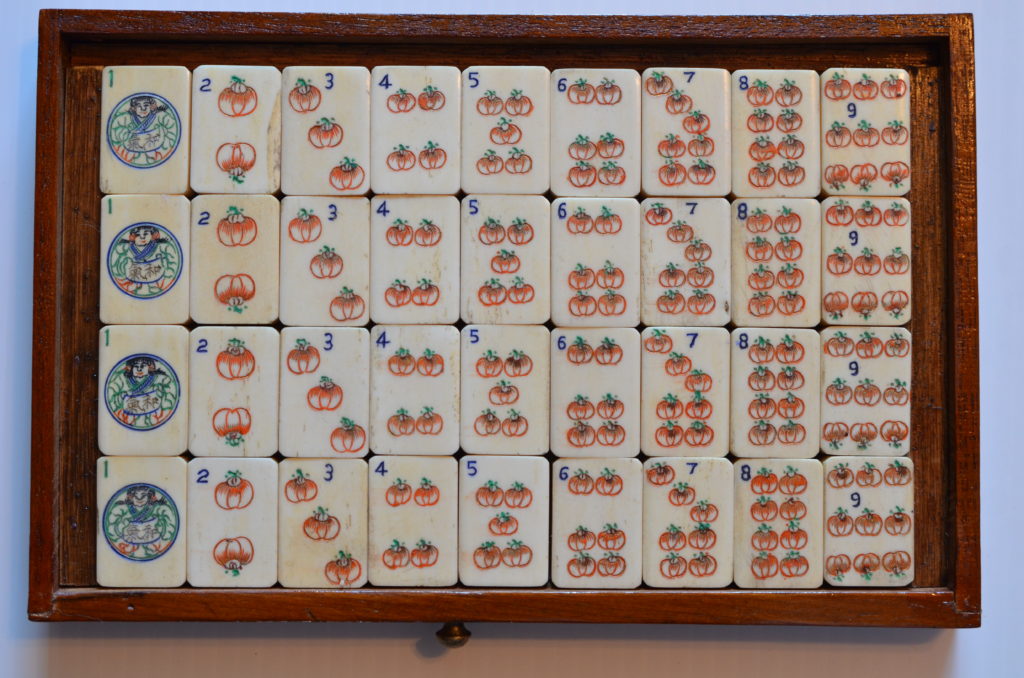 The other Dots are pumpkins, a gourd important to the Chinese. Each pumpkin has a lot of seeds, thus its associated with the wish for many children.
The other Dots are pumpkins, a gourd important to the Chinese. Each pumpkin has a lot of seeds, thus its associated with the wish for many children.
http://primaltrek.com/gourd.html
The Craks are surrounded by garlands, with chrysanthemums at the top and bottom. Many of you eagle-eyed readers may also notice the Chinese numbers are different. This number system is the way numbers were written in the Chinese banking world, because the numbers could not be altered on checks and other banking forms.
The Flowers are beautiful and delicately carved. The ones on the right are those plants associated with the seasons, chrysanthemum, bamboo, orchid and plum blossom. And look how thick the bone is! The creature on the Green Dragon looks to be a leopard.
The Red Dragon features a fabulous hawk. If you look closely, the bird is holding a ribbon which surrounds Chung, a symbol for Center, representing China. Many of you know that a hawk on a globe means Chinese military strength, and I think that is what this means here too.
The winds have plants. The East looks to be a carrot or parsnip, West is a lotus root, North a Bamboo shoot and South a gourd.
Here is the story, written by Allan, about how the set got to the Allan and Lila Weitz collection.
Here is a brief history of set #1
The hallmark of a true collector is patience and knowledge. For the last 19 years, I have been acquiring mahjong knowledge and am still learning facts every day. Patience was willed to me by my father. He was a perfectionist and in his retirement, built violins by hand from scratch. I observed him working on a front or back for weeks and if he was not satisfied, onto the scrap pile went the piece and he would start again.
I source my sets from many areas. One area in particular is appealing. There are dozens of small auction houses with websites not associated with platforms such as Invaluable, or eBay. They do not send reminders on key words. Months of patient regular checking can go by without a hit. In November, 2015, a mahjong set poorly described and photographed popped up from a small company in Canada. My knowledge told me that this was a special set. If I was correct, I witnessed two similar sets sell for $8000US and $12000US. I telephoned in my bid the day before and waited. Two days later, my phone rang and I was informed that I had won the set. My heart stopped and I asked the hammer price. $650Can + 20% . I quickly paid by credit card and instructed the local UPS store to mail the package to me. I had previously done business with this store and they were very efficient. The same day, UPS sent out the box with tracking. I was able to follow to follow the progress of the package and delivery was scheduled for two days before Christmas Eve. I stayed home all day waiting for the driver and at 5.00pm, the tracking site flashed "Package Delivered" I rushed to the front door and found........nothing. Patience went out the window. What was my next move? I decided to go and search for the box. It was dark and freezing cold, The plan was to search in concentric circles from my house. I live on a crescent with about thirty homes. I walked along the middle of the road and checked front doors from left to right. About six homes up I spied a large box in the shadows of the front door. I quickly scaled the stairs to the door and there was a large box. Before touching the box, I rang the front door bell-no answer, I rang a second time- nothing. I picked up the box and read the address label. Allan Weitz 12.... from UPS. As I walked down the stairs, I looked at the address of the house posted on a narrow column. It was number 21, But because there was little room on the plaque, the 2 was on top and underneath was the 1. The UPS driver was probably super tired and read the address wrong. I floated home and placed the box on the kitchen counter. Slowly I unpacked the set and my heart stopped again. The set is magnificent and is listed in my top ten sets. This is an example of what collecting is all about.
So, this holiday season, in addition to the really important wishes and prayers we have for family, friends, our country and the world, maybe we can be hopeful something wonderful like this set can show up in our lives too!

